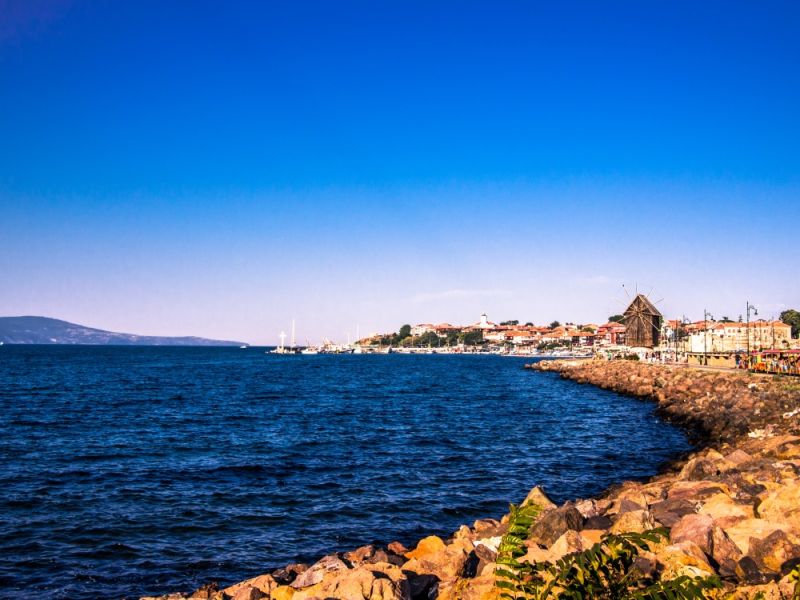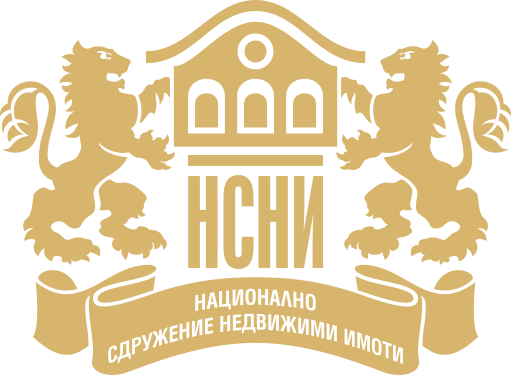Nessebar – a crossroads of eras
In the neighborhood of Sunny Beach resort is the unique town of Nessebar – a crossroads of eras, one of the oldest towns in Europe, whose history dates back more than three millennia. The picturesque island, almost detached from the mainland, invites its guests to plunge into the depths of history. Sinking into the sea century after century, Nessebar has managed to preserve for us many cultural monuments and legends that put it on a par with such gems of European civilization as the Acropolis of Athens, Venice and Jerusalem….
Founded on a rocky peninsula in the far 2nd millennium BC, this town has changed many rulers and cultures. Within the walls of Old Nessebar, the ruins of the pagan temples of Zeus and Apollo neighbor the Orthodox Church of the Holy Virgin, Byzantine and Turkish baths neighbor the picturesque houses of the Bulgarian Renaissance. Such diversity cannot help but arouse interest in the city’s eventful history….
From Menebria to Nessebar

On the site of this town there was once, several millennia ago, a Thracian settlement called Menebria, in honour of its founder, the Thracian leader Mena. Then, in 510 B.C., the Dorian Greeks transformed the place into a Greek colony and a lively trading centre, known in the Greek world as the city of Mesembria. The favourable geographical location of the city, as well as the navy that Mesembria had at its disposal, ensured extensive trade links not only with the coastal cities of the Black Sea, but also with the Mediterranean world. And the intermediary role of Mesembria in trade between various Thracian tribes and Greek cities-polis, islands of Thasos, Rhodes, Chios, Delos, distant Egypt, provided prosperity and well-being of its population.
Four centuries later , the city was captured by the army of the Roman Empire, in which its development continued. Even then, Mesembria was characterised by its urban planning, fortress walls and architecture, which were on a par with the best achievements of the era.
The city received a number of privileges from Rome, such as the right to mint its own coinage. After the fall of the Roman Empire, Mesembria, together with the entire Balkan Peninsula, became part of Byzantium.
In 811 the Bulgarian Khan Krum the Terrible took possession of the city. It was in the 9th century, when Bulgarian speech was heard here, that the name of the town was changed to Slavic – along with the old name, the town acquired a new one, which has survived to this day – Nessebar. As part of the Bulgarian state, Nessebar developed rapidly politically and economically, and its cultural prosperity was also at this time. By the XIV century there were over 40 churches in Nessebar. The peak of Nessebar’s development was during the reign of Tsar Ivan-Alexander, when the town was one of the most important in the Bulgarian state.
In 1452 Nessebar was besieged by the Turks. The town fell and the fortress walls were destroyed. Then there was a long period of the Ottoman yoke, during which Nessebar fell into decay. From the 19th century, after the liberation of Bulgaria from the Ottoman oppression, the Bulgarian National Renaissance began, in which the ancient town came to life again, developing as a fishing and wine-making centre. In the middle of the last century, Nessebar began to gradually develop as a holiday resort, and today it is hugely popular with tourists from all over the world. Since 1983, the area of Old Nessebar has been included in the UNESCO World Heritage List. The layering of eras and cultures in this small town still attracts archaeologists, who dream of uncovering the secrets of the ancient world and finding new valuable exhibits in this open-air museum.
Old-new town
The city’s numerous conquerors, earthquakes and the encroaching water from all sides have left a visible mark on the streets of Nessebar. However, the town has preserved to this day many ancient artefacts, ruins of Byzantine temples, as well as magnificent and romantic buildings from different eras, which illustrate its turbulent history better than words can say. What is interesting is that the territory of the ancient Mesembria was twice as big as the present one. Today, Old Nessebar is only 850 meters long and 300 meters wide. Scientists have established that every century the sea level here rises by 16 cm. Thus, during the existence of the town, the sea has taken away more than 4 meters of its height. The most ancient part of the city and its fortress walls have gone underwater, and today, when the sea is clear and calm, the ruins of the underwater Mesembria can be seen.
And yet today you can enter Old Nessebar by the same ancient road and through the same gates as a few millennia ago. This road stretches from the mainland along a narrow isthmus no more than ten meters wide. During storms, the waves roll over the embankment, and then all those who want to return to New Nessebar on dry land have to wait for the weather to subside. It is surprising that for all the centuries of its existence the town has never lost this “link” with the big earth.
For protection from the advancing sea, the city was built on terraces, spectacularly reinforced by retaining walls of hewn stone blocks. The city’s quays were once protected on both sides by statues of the city’s patrons, the ancient gods Zeus and Apollo, in whose honor the two main temples of Mesembria were erected. There were also temples in honor of Hera, Demeter, Dionysus, Asclepius, Cora, Hecate, Isis and other celestials. Alas, all this luxury of antiquity has not survived to this day – archaeologists have found only numerous fragments of them, and the ruins of the temple of Apollo served as the foundation for the oldest Orthodox church in Nessebar – the Basilica of St Sophia, also called the Old Metropolis, which was erected here in the 10th century.
While in the 14th century Mesembria could boast almost five dozen churches and chapels, today only a fifth of them can be found in Nessebar. However, to this day Nessebar has the highest number of churches per capita in the whole country. The old churches of this picturesque town are a bizarre mixture of Slavic and Greek architectural traditions. Four of them have been converted into art galleries and are open to the public, and the only active church here is the Church of the Holy Virgin. There is a legend associated with its origin. It tells that two centuries ago in Nessebar, on the branches of a tree, an icon with the face of the Mother of God was discovered.

The find was taken away, but the next day it miraculously returned. The story was repeated several times until one of the women who found the icon was visited by the Blessed Virgin. She asked to build a temple on this place, which was done. The roots of the legendary tree remain in its floor. It is said that touching them can cure any ailment. The legendary icon of the Blessed Virgin Mary, carefully kept in the walls of the church and widely known throughout Bulgaria, is also considered miraculous. Every year in August, on the eve of the feast of the Holy Virgin, many believers spend a night in this church to heal their illnesses.
Another legend is the local Church of St John Alitourgetos from the 14th century. It was popularly known as the Unsanctified Church. It is said that the master who decorated the church fell in love with the daughter of a rich resident of Mesembria, whose money was used to build the church. Not having received the consent for the girl’s hand in marriage, the poor master did not finish the work and threw himself from the cliff into the sea. The church remained unconsecrated – in fact, according to church canons, the temple can not be consecrated, if during its construction killed a man. However, such an unusual status of the church did not interfere with the church services, which stopped only in 1913, when the earthquake destroyed a significant part of the temple.
One of the most beautiful churches not only in Nessebar, but also in the whole Bulgaria is the Church of Christ Pantocrator (Almighty), built in XII-XIV centuries. It amazes with its richness of forms and ceramic inlays in the decoration. Now the temple building houses an art gallery.
In the museum town there is another significant monument of Bulgaria’s cultural heritage – the church of St. Stephen of the XI century, which has well preserved its architectural appearance, iconostasis and frescoes. The church has more than 1000 images in 258 compositions, which depict scenes of Christ’s miracles according to the Gospel legends.
In addition to the Orthodox architectural monuments in Nessebar – crossroads of eras, there are other interesting buildings to explore. For example, the imposing Turkish bath, dating back to the 19th century, impresses with its monumental architecture and is a recognized example of the Early Renaissance. In the narrow streets of Nessebar, the unusual houses of the townspeople themselves, built here during the Renaissance, are also impressive. On top of the sturdy stone walls of the ground floors are wooden superstructures: living spaces, balconies and roofs are decorated with carvings and reliefs. These squat, tightly pressed together Black Sea-style houses have withstood the storms of several centuries.
History buffs should not miss the opportunity to visit Nessebar’s museums. Opened here since 1994, the Archaeological Museum specializes in local history. In it you can get acquainted with the amazing finds of archaeologists, from Thracian and ancient rarities to the ceramics of the Middle Ages and unique Orthodox icons. And the Ethnographic Museum of the city presents a rich collection of Bulgarian jewellery and costumes.
Holidays for all tastes

After enjoying the historical beauties, the weary traveler will find in Nessebar everything he or she needs for a good rest. There are many cafes and restaurants scattered around the town with excellent cuisine and fabulous views of the sea or cozy medieval courtyards. The town’s restaurants are particularly famous for their seafood dishes – not for nothing, after all, the art of fishing has flourished here for thousands of years!
After a good meal (and there is no other way to do it in Bulgaria), you can swim around the numerous shops of local craftsmen and souvenir traders. Here, as well as in the neighboring resorts, you can buy popular Bulgarian souvenirs – both cute trinkets and practical household items or tasty gifts for your family and friends. For example, utensils made of unfired clay, which many people consider to be the main secret of delicious Bulgarian cuisine, or painted Trojan ceramics, woven tablecloths with national patterns and skillfully woven lace napkins, pots with tasty highland honey and vials with strong rakija… The list of various souvenirs offered by the shops in Nessebar is endless.
The small and cozy beaches in Old Nessebar invite visitors to sunbathe and swim in the cleanest sea. And if you prefer a larger sea holiday, New Nessebar is just a 15-minute walk from the town, with a network of hotels and beaches to suit all tastes. Here you can diversify your seaside activities with diving and windsurfing. Also from Nessebar you can go to the sea on an excursion yacht or go to the nearby aqua park – by the way, the largest in Bulgaria.
Back to antiquity
It is worth noting that today the town is very popular among tourists. If you plan to visit it during the high season, we advise you to start your walk around Nessebar early in the morning. While the pavement of this town, which contains stones from the Roman Empire, is not filled with numerous tourists, you have the opportunity to plunge into the real life of Nessebar, to imagine how its inhabitants lived here many centuries ago.
You can return to the ancient and medieval Mesembria in the late evening, when the waves of tourists leave the streets of the town. Admire in the rays of the setting sun the ancient wharf, where the legendary Argonauts, who set out for the golden fleece, may have dropped their anchor. Use a telescope near the shore to search the starry sky for the constellation of Lyra, into which, according to legend, the famous Thracian Orpheus was transformed. Listen to beautiful long melodies performed by a bagpiper, who after sunset sits on the fortress wall of Nessebar. Such a walk through the centuries will fill you with impressions for a long time and will make you return to this town again and again.
Want to buy or rent


